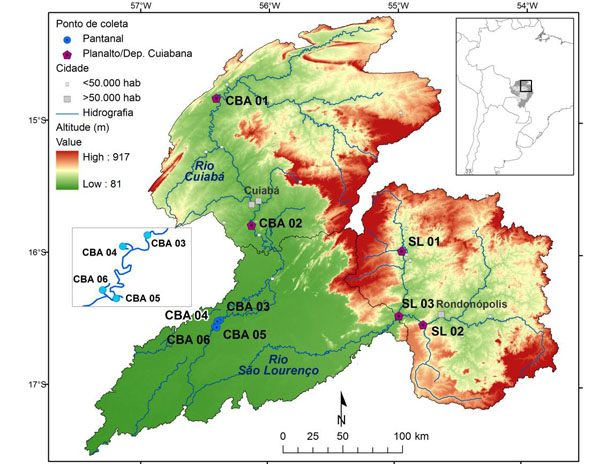Accumulation of nutrients by forage grown in domestic sewage treatment runoff system
Keywords:
effluents, disposal in soil, macronutrients
Abstract
It is evident today that water quality is declining. This deterioration is mainly due to population growth and several aspects of agro-industrial production. This work therefore aimed to evaluate the performance of three forage species which are used for the treatment of domestic sewage (DS) applied to the soil via the superficial runoff technique. This experiment was conducted at the Agrarian Sciences Center of the Federal University of Espírito Santo, Brazil using a completely randomized design experimental delineation, with three replications in a split plot technique 3x5x2. The plots were composed of Brachiaria brizantha cv. Marandu, Cynodon sp. cv Tifton 85 and Paspalum atratum cv. Pojuca, with five levels of effluent application rates in the subplots: 7.91, 15.81, 23.72, 31.63 and 39.54 kg ha-1 day1 BOD. Two cuts of the plant material were done at 28-day intervals after the treatment application. The results showed that nutrient accumulation by the forage was higher than that reported in literature for Marandu grass, Tifton 85 and Pojuca. These results highlight the potential of these grasses on wastewater treatment, especially DS effluent.
Published
05/02/2014
Issue
Section
Papers
Authors maintain the copyrights for their work. However, they grant rights of first publication to Ambiente e Agua - An Interdisciplinary Journal of Applied Science. In compensation, the journal can transfer the copyrights, allowing non-commercial use of the article including the right of sending the article to other data bases or publication media. The journal uses the CC BY 4.0 license"






